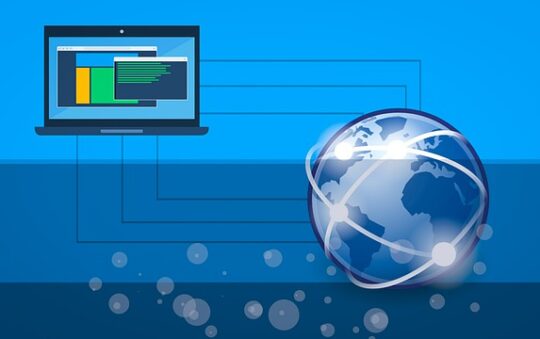Water is a chemical bond with hydrogen and oxygen gas. Actually, we call that water is the life of a human being. The water electrolysis process generally held to occur minimum potential differences inside the water around 1.23 volts. Electrolysis of water is a process in which electricity decomposes/ divides the bond of water into hydrogen and oxygen gas.
The releasing hydrogen gas in this process is used as a hydrogen fuel or re-attached with the oxygen to create an oxyhydrogen gas. This oxyhydrogen gas is used in welding and other applications. An electrical chemical process like this is called a water electrolysis process. Water electrolysis processes are a useful process in our rural life. So, in this article, we were vividly discussing the water electrolysis process.
The Background of Water Electrolysis
Two historical person contributions are most to invent the water electrolysis. These two persons are – Jan Rudolph Deiman and Adriaan Paets van Troostwijk. Both of them are used to make an electrostatic machine that was discharged on gold electrodes in a Leyden jar with a water bowl in 1789. Another famous scientist named Alessandro Volta invented an important electrolysis pile named voltaic pile in 1800. Afterward, two English scientists William Nicholson and Anthony Davy used this machine for inquiry of the electrolysis of water. In 1806, another famous scientist Humphry Davy had invented a new discovery upon the water electrolysis process, and the chemical was Nitric Acid. Nitric Acid was produced at the anode. Actually, it was a dissolved atmospheric gas during the water electrolysis. Further, he used a high voltage battery and non-reactive electrodes and vessels named gold electrode cones. This cone had doubled as Vessels Bridge by damp asbestos.
Later, in 1896 when the Grameen machine was invented by Zenobe Gramme, this electrolysis process became a cheap method for the production of oxygen.
What Is the Aim of a Water-electrolysis?
Water-electrolysis is a cheap method in which you can produce hydrogen frequently. In that case, scientists have engaged this simple method for making hydrogen gas for their chemical research purposes. Again, fossil fuels became more expensive and less available day by day. So, water electrolysis is an on-demand project for producing more and more hydrogen and oxygen gas. It won’t burn or pollute our environment.
Water electrolysis procedures’ main aim is to generate more energy by split water bonds. It fulfills the energy demands in many countries. Currently, most industrial companies use this method for making natural gas.
You may also like: Which of the following anions act as weak bases in solution?
Water electrolysis is also used to generate oxygen for the international space station. Hydrogen gas is used in fuel cells as a storage method of energy and water.
Water electrolysis has another aim is to serve fluid in our body. Water electrolytes are minerals that conduct electricity when immersed in water. It has produced electric potential energy, which is distributed through the fluid. It used its electrical energy to facilitate important bodily functions. It helps to control the fluid balance in the human body.
For which of the following aqueous salts will electrolysis produce hydrogen gas and oxygen gas?
Electrolysis is the splitting procedure of H2O (Hydrogen Oxide) into H2 and O2 gas by a running electrical current. To hold this process, you need to estimate two opposite ions. The electrolyte is driven by two electrodes. These are called cathode and anode. The cathode is positively charged. And the anode is negative. The positive ion of the compound will be attracted by the cathode. And the negative part of the compound is attracted by its negative part called the anode.
These chemical reactions occur by an electrical current which the researcher called water molecules. These water molecules dissociate into hydrogen cations and oxygen anions. Hydrogen cations gather at the negatively charged cathode. These anode and cathode are formed by some dissolving salt such as NaCl, Cacl2, BrF2, I2 etc. Again, Hydrogen cations collect the negatively charged ions. And the hydrogen forming gas gathers on the cathode. The second processing gas of oxygen gathers on the anode. Both of these gases are gathered on these electrodes by the loss of electrons.
This process can also occur by soluble salt. These salts are common on their isotopic number. Generally, 1.0 mole of water produces 1.0 mole of hydrogen and ½.0 mole of oxygen.
The Interchange of Atoms and Ions of Electrolysis
The main process of electrolysis depends on the interchange of atoms and ions. Each electrode attracts them, and the opposite is making a chemical bond between them. At the electrodes, the electrons of the positive ion are released or attached to it. Those ions that gain or lose electrons become neutral. Actually, it’s a key religion of every chemical product to become neutral. And these ionic release and gaining processes are called oxidation and reduction.
Oxidation is a chemical bond that signifies only the positive ions and releases the extra ions for gaining the neutral number. Such as, the atomic number of Na is 23. Na wants to gain the atomic number Argon which has a neutral atomic number. So, Na has to release 2+. In that case, Na is an oxidation chemical. Again, the Cl is a reduction as it wants the release atomic number of Na to become neutral. Oxidation and reduction are generally held on electrolytes to occur energetic reactions throughout the water.
Oxidation of ions or neutral molecules occurs on an anode electrode. And the reduction of ions or neutral molecules occur cathode electrode. For example, ferrous ions will dissolve into ferric ions at the end.
Fe²+ (aq) = Fe³+ (aq) + e-
Again, the electrode can break the bond of chemicals for producing H+ ions in acidic reactions. The other dissolving salts can break down into the electrolysis process for Hydrogen gas. As an example,
Na²+ (aq) = Na (aq) +2e-
In a word, the dissolving salts are responsible for producing hydrogen gas equally by oxidation and reduction process on it. But remember, you have to break out the older bonds between the ions by this process.

![Water Electrolysis Process with Chemical Reactions [2022] Water Electrolysis Process with Chemical Reactions [2022]](https://ohee.net/wp-content/uploads/2022/01/Water-Electrolysis-Process-with-Chemical-Reactions.png)







